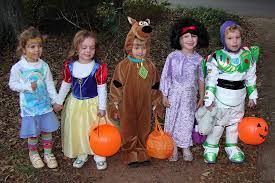Although Halloween originated in pagan and Christian traditions, modern American Halloween is usually a purely secular celebration centered on candy and clothing. But in fact, one of the most trivial aspects of the festival has serious religious beliefs. Medieval Christian tradition said that on Halloween, the poor go to the rich to pray for them. Historian Nicholas Rogers (nicholas rogers) explains that Nicholas Rogers (nicholas rogers), author of “Halloween: from pagan rituals to Party Night,” explains that in order to show their gratitude, The rich offer food and beer to the poor.
In fact, many Halloween customs come from the same rituals. Tourists, for example, often carry lanterns made of hollow turnips with candles inside that represent the soul of the invaders. Mass is held so that the soul does not feel neglected and troubled. The medieval British historian John Stowe (john stow) reported that there were “subtle camouflages, masks and mummies”-so, in some cases, choir boys dressed as virgin brides, representing upcoming marriages. This will lead to more fertility and the replenishment of the Christian population.

But after the Protestant Reformation-which dates back to another October 31: Martin Luther published his 95 papers in 1517-the idea of saving souls in this way began to lose popularity among many new denominations. Some Catholics adhere to the door-to-door practice of going door-to-door on the eve of all Saints’ Day, a custom that later became known as “soul.” By the 1840 s, Ireland and Scotland had seen waves of Ireland and Scotland. Immigrants brought this custom to the United States, which is basically a secular pastime related to immigration. The young dance outside the apartment in exchange for gifts and revelry in the streets and bars. Clothes are made of old clothes, with charred corks on their faces. Tricks include stuffing the chimney with cabbage and beating each other with a flour bag.
Although Catholics Irish face widespread prejudice from local forces in their new homeland, the celebration was stripped of Catholic foundations and soon proved popular. As the immigrants began to assimilate, newspapers reported on the trends of 19th-century college students. In the early 20th century, high schools, Rotary clubs and charities began to host Halloween parties, and guidelines on how to hold such celebrations came into being. In the 1930 s, North America had a new term for this ancient tradition: cheating or healing. With the development of suburbanization in the 1950s, deception or treatment gradually developed into a child-friendly practice, which is to a large extent regarded as today’s practice.





























